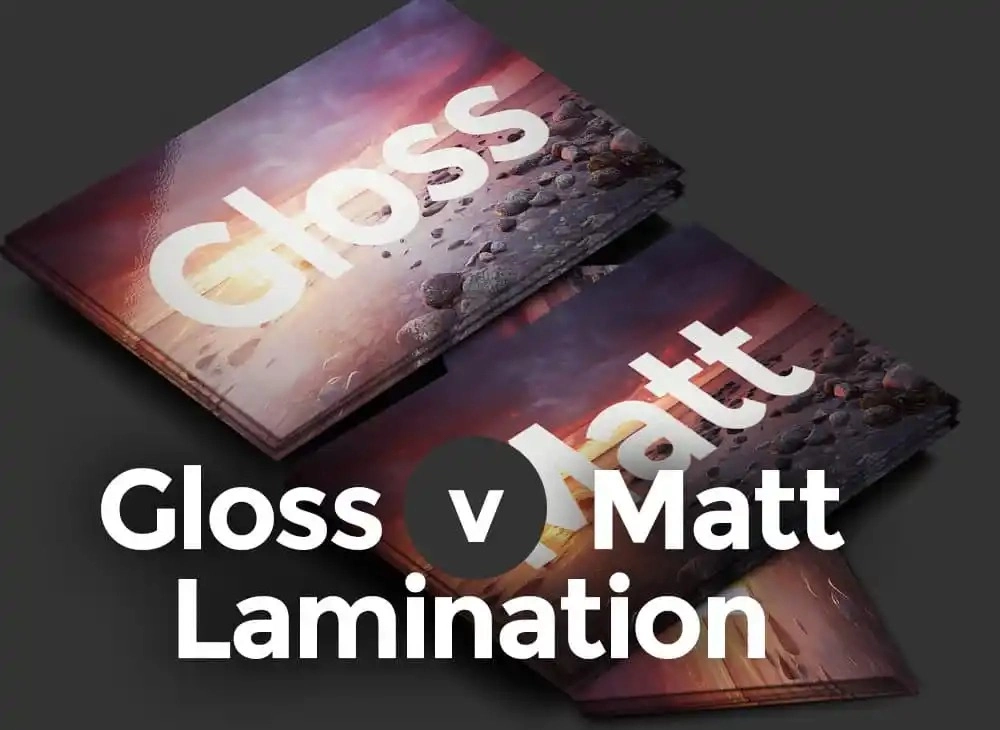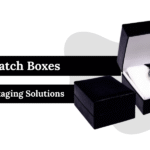In the competitive world of custom packaging, marketing materials, and branding, every detail counts—including the type of lamination you choose.
Two of the most popular finishes in the printing industry are matte lamination and gloss lamination. Each offers a distinct look and feel, impacting not only the visual appeal but also the durability and overall user experience of your printed piece.
This comprehensive guide explores the differences between gloss or matt lamination, their advantages, disadvantages, applications, and how to choose the best finish for your specific needs.
What is Lamination in Printing?
Lamination is a finishing process where a thin plastic layer is added on top of printed materials. It makes the print look better, feel smoother, and last longer. Lamination also protects against moisture, scratches, and everyday wear and tear.
There are two main types of lamination:
- Gloss Lamination
- Matte Lamination
Both are applied using heat and pressure to bond the film to the paper surface, but the final look and feel differ drastically.
What is Gloss Lamination?
Gloss lamination adds a shiny, reflective layer to printed materials. It makes colors look brighter, richer, and more eye-catching. This glossy finish is great for marketing materials, packaging, magazines, and photo prints anywhere you want a bold, vibrant look.
Benefits of Gloss Lamination
- Enhanced Color Definition: Colors appear deeper, blacks are richer, and images are more lifelike.
- Smooth, Reflective Finish: A sleek, premium appearance that draws attention instantly.
- Durable & Water-Resistant: Protects against smudges, stains, and light moisture exposure.
- Perfect for Visual Appeal: Great for retail packaging, menus, flyers, and brochures where catching the eye matters.
Potential Drawbacks
- Glare & Reflection: Under direct lighting, the shine may cause reflection, making text harder to read.
- Fingerprint Prone: Finger smudges are more visible, which can diminish the clean look.
- Less Suitable for Writing: Glossy surfaces resist ink from pens and markers.
What is Matte Lamination?
Matte lamination gives printed materials a soft, smooth finish without any shine. It absorbs light instead of reflecting it, creating a clean, non-glossy look. This elegant style is perfect for designs that focus on minimalism, luxury, or easy readability—like high-end packaging, business cards, or book covers.
Benefits of Matte Lamination
- Elegant & Premium Feel: The soft touch is associated with high-end products and luxury brands.
- Non-Reflective Surface: Easier to read under all lighting conditions — perfect for heavy-text applications.
- Less Prone to Fingerprints: Offers a cleaner look even after handling.
- Writable Surface: Compatible with ballpoint pens and some markers — useful for folders, labels, and notepads.
Potential Drawbacks
- Softer Colors: Tones appear more subdued, which may reduce the vibrancy of images.
- Slightly Less Durable: More susceptible to visible scuffs and scratches.
- Less Protective Against Moisture: Offers basic water resistance, but not as effective as gloss. more
Matte vs Gloss Lamination: Side-by-Side Comparison
| Feature | Gloss Lamination | Matte Lamination |
| Finish | Shiny, reflective | Soft, non-reflective |
| Color Vibrancy | Bright and vivid | Subtle and muted |
| Durability | High — moisture and scratch-resistant | Moderate — can scuff easily |
| Best For | Photos, brochures, menus, flyers, packaging | Books, luxury boxes, stationery, high-end branding |
| Fingerprint Resistance | Low | High |
| Writable | No | Yes |
Industry Applications and Use Cases
When to Choose Gloss Lamination
Glossy finishes are especially effective in applications where visual impact is the priority.
- Retail Packaging: Consumer goods, cosmetic boxes, and promotional products benefit from the sheen and color pop.
- Marketing Collateral: Brochures, flyers, posters, and banners that need to grab attention quickly.
- Photographic Prints: Wedding albums, high-end lookbooks, and catalogs where image clarity is key.
When to Choose Matte Lamination
Matte is ideal for brands looking for a sophisticated or muted aesthetic.
- Luxury Packaging: Perfume boxes, watch cases, and premium chocolate packaging often use matte for elegance.
- Books and Stationery: Covers of notebooks, journals, and novels often feature matte for readability.
- Corporate Materials: Business cards, presentation folders, and letterheads reflect professionalism with a matte finish.
Combining Matte and Gloss: Spot UV and Hybrid Finishes
If you can’t decide between matte and gloss, there’s an innovative solution: Spot UV or soft-touch with gloss elements. This technique uses selective gloss coating over a matte laminated surface to create contrast and texture.
- Enhance Logos or Text: Apply gloss only to your logo or headline text for a striking visual.
- Tactile Contrast: Matte background with glossy highlights engages both sight and touch.
- Memorable Branding: Ideal for business cards, invitations, and packaging that need a “wow” factor.
Environmental Considerations
With growing awareness around sustainability, both matte and gloss laminations have eco-friendly options. Water-based coatings, biodegradable films, and recyclable paperboards are increasingly used across industries.
- Gloss: Often uses polypropylene or polyester films; however, biodegradable gloss options are emerging.
- Matte: Frequently combined with FSC-certified or recycled paper for a greener alternative.
Always ask your printer or packaging supplier about recyclable laminates or compostable coatings if environmental impact matters to your brand.
How to Choose Between Matte and Gloss Lamination
Your decision should reflect your brand identity, end-use requirements, and target audience. Consider the following:
- Do you want vibrant, eye-catching visuals? Choose gloss.
- Is your brand more refined and elegant? Matte is the way to go.
- Will the product be handled frequently? Gloss may offer better long-term protection.
- Does it need to be writable? Matte offers more flexibility.
Professional advice from your printer can also help determine the most appropriate finish based on print material, thickness, and intended use.
Final Thoughts
Both matte and gloss lamination offer unique benefits tailored to different industries like custom designs boxes, design goals, and functional needs. Whether you’re creating packaging that pops on retail shelves or conveying sophistication through a corporate brochure, choosing the right lamination finish can elevate your brand presentation and increase your product’s perceived value.
For the best results, align your lamination choice with your brand message, target market, and user interaction expectations.




The comparison between gloss and matte laminations is super helpful. In my experience, gloss works well for short-term, high-impact materials, while matte feels more refined for longer shelf life.